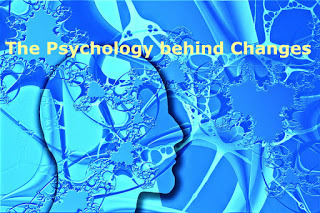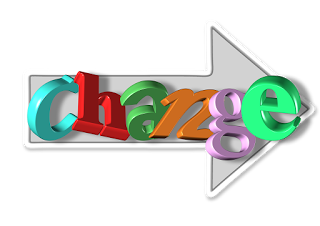The New Book “Change Insight” Introduction Chapter 1: The Psychology behind Changes
 Change is only constant, the speed of change is accelerated. Organizations have to manage change effectively in order to implement their strategy cohesively. However, more than two-thirds of Change Management fail to reach the expectation. What’re the psychology behind the change, why do people resist changes? What would be a good way to empower change capabilities? And how to manage change not as a one-time project, but an ongoing capability?
Change is only constant, the speed of change is accelerated. Organizations have to manage change effectively in order to implement their strategy cohesively. However, more than two-thirds of Change Management fail to reach the expectation. What’re the psychology behind the change, why do people resist changes? What would be a good way to empower change capabilities? And how to manage change not as a one-time project, but an ongoing capability?
People like to change, but do not want to be changed: It would be great for change practitioners to have a reasonably good understanding of neuroscience; since it does help understand people’s responses to changes. People respond in different ways to different situations, hence, change practitioners need to have good critical thinking skills, high level of adaptability, communication and engagement skills. The more transparent about a change effort, the less uncertainty there will be about the effort. People resist changing mostly because they have experienced disasters around previous efforts that they do not trust their leaders, poor change experiences, lack of compelling rationale, a poorly designed implementation plan, unworkable designs created incorporate changes that have stopped in the middle, all have created extra work and disruption for little or no gain. People ate thus resist being forced into senseless or avoidable sacrifices, having to restructure based on a shallow or ill-defined problems or transform without their assent, being treated as objects.
There is a distinct relationship between a person’s emotional state and small or expansive thinking: When people experience a state of anxiety or uncertainty, they tend to drift back to the comfort of small thinking and getting their minds around points of detail. When that anxiety is removed and they experience more certainty, they have the courage to thinking more expansively. So the challenge with change is to create emotional states that mean certainty for the individuals affected, and have it stick. Not easy, but not impossible. It is all about perspective. What is more interesting is what drives people’s perspectives, many people have no energy or desire left to think longer term. In addition, people all have biases, awareness of them is important, many of such biases are apparent at the same time, sometimes complementing each other and other times contradicts each other, so that you can reduce the harmful impact they might have, and leverage upon the beneficial. Make sure that when you make decisions on changes, they are not based on opinions, but on a commonly understood starting points to make changes.
 There are five personalities to deal with in Change Management: Change is inevitable, and the only differences are the reasons and goals behind the change and its scope, depth, and breadth - why to change, what you need to accomplish, what does it consist of and what does it impact. There are five personalities from Change Management perspectives: Pathfinder, Listener, Organizer, Follower, Resistor. People look for “What’s In It For Me.” Given this, Change Management needs to craft and most importantly deliver these messages at both the individual and group level, and most importantly reinforce these statements through consistent action. Resistance to change isn’t necessarily the problem since it’s a natural human response to the loss or fear of uncertainty, it could be a balancing mechanism and one of the change’s biggest opportunities. If you can tap into, better understand and work with the energy of resistance you can also accelerate purposeful changes.
There are five personalities to deal with in Change Management: Change is inevitable, and the only differences are the reasons and goals behind the change and its scope, depth, and breadth - why to change, what you need to accomplish, what does it consist of and what does it impact. There are five personalities from Change Management perspectives: Pathfinder, Listener, Organizer, Follower, Resistor. People look for “What’s In It For Me.” Given this, Change Management needs to craft and most importantly deliver these messages at both the individual and group level, and most importantly reinforce these statements through consistent action. Resistance to change isn’t necessarily the problem since it’s a natural human response to the loss or fear of uncertainty, it could be a balancing mechanism and one of the change’s biggest opportunities. If you can tap into, better understand and work with the energy of resistance you can also accelerate purposeful changes. Change should be viewed as an opportunity, it’s the opportunity to either solve a business problem or improve productivity or cut costs or improve a product or service. TO achieve desired change, an organization must create an environment that enables effective collaboration, shares and promotes ideas, and provides necessary incentives for employees, empower your change agents, and reward your change champions. Therefore, neither change nor resistance to change is a problem. Instead, leadership, communication, and engagement are the keys to successful change or lack thereof is the problem. Change Management is not a standalone subject matter. It is part of the strategy, which if done properly, includes the change in the process. Follow us at: @Pearl_Zhu
Published on October 09, 2016 22:59
No comments have been added yet.



